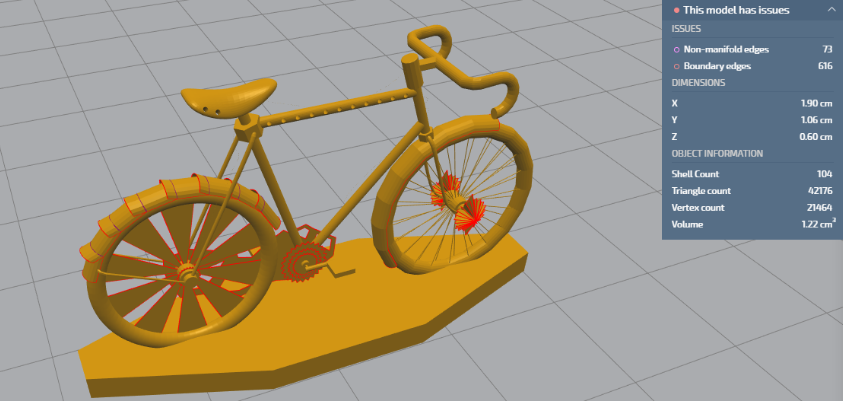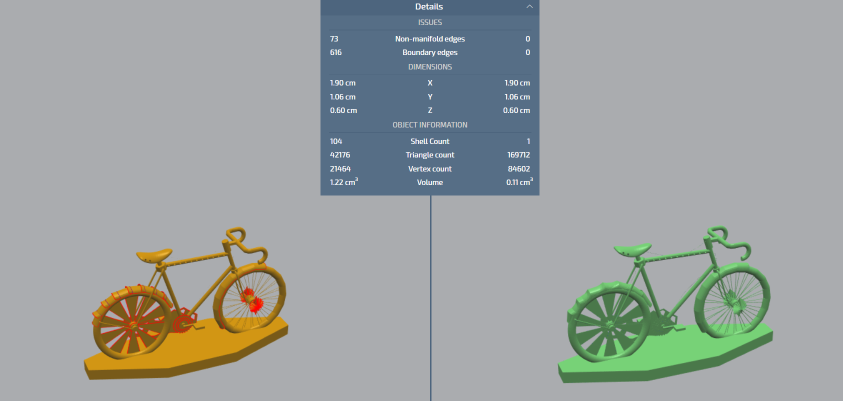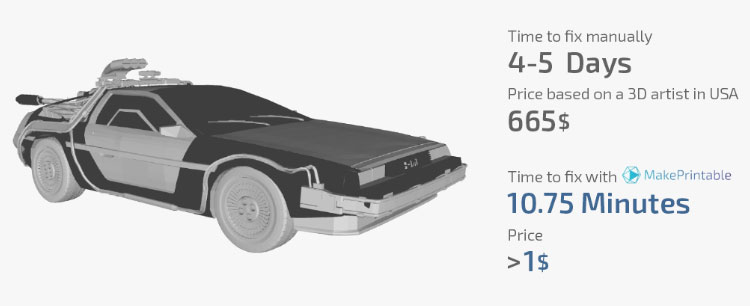Now that you know your 3D model has an issue, it is time to repair it and ensure that it prints seamlessly.
Our patent pending fixer will try to understand your geometry and rebuild it into a
printable form; this removes all issues that usually prevents a successful print
including:
1. Model issues: All intersecting geometries get connected, and proper
geometry is generated to make sure that the model will print.
2.Non-manifolds: Non-manifolds will be removed during the
reconstruction process and our fixer ensures
that a single edge shares only 2 faces.
3.Boundary edges: Holes and open edges are
either capped or thickened, the decision is made ccording to the size of the hole and
whether boundary edges are actually representing a looping hole.
4.Overlapping faces & duplicate triangles: any overlapping faces will
be removed and new faces are generated
in a topologically correct form.
5.Flipped faces: the fixer will make sure faces are
pointing into the right direction avoiding any slicing issues that might happen due to
wrong face orientation in the 3D file.
A picture of 3DPrepPro's viewer showing a
model with Boundary edges.

After the repair process, we can see that all boundary edges have been repaired and the
model is now ready for 3D printing.
The picture shows a Before and after comparison of
a 3D model that was repaired using 3DPrepPro. The original on the left and the
repaired on the right.

One other benefit of repairing your model, includes saving print time. Not only does it save you time by ensuring print success from the first attempt, but since 3DPrepPro rebuilds your mesh, it removes all unneeded geometry from your meshs topology. We did an experiment on various models to see the how long it took a series of models to print with and without repairing the model. Below is our outcome of our results.

 CHALLENGER
CHALLENGER
 HELICOPTER
HELICOPTER
 SCORPION
SCORPION
 SPACESHIP
SPACESHIP
 PROSCHE
PROSCHE